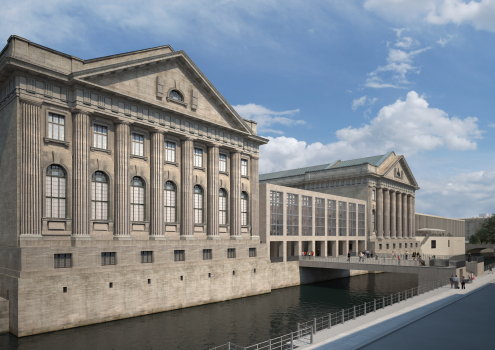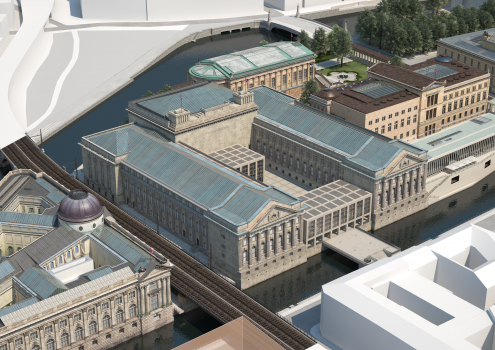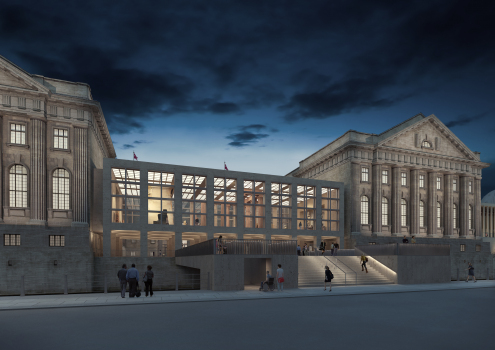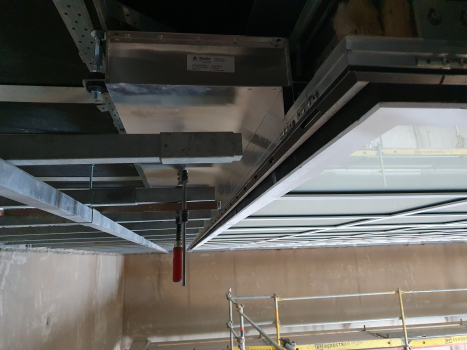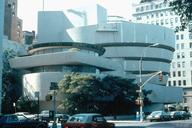New air ventilation system in the Pergamon Museum
Berlin's Museum Island is a UNESCO World Heritage Site and one of the capital's visitor highlights. An important part of the Museum Island is the extremely popular Pergamon Museum. Extensive basic repairs have been carried out in sections since 2013 - taking into account the monument protection requirements and over a long period of time. The renewal of the ventilation technology is a particular challenge.
Media
Imposing reconstructions such as the Ishtar Gate from Babylon or the Pergamon Altar as well as the exhibitions of the Antikensammlung, the Vorderasiatisches Museum and the Museum of Islamic Art of the State Museums in Berlin attract thousands of visitors to the Pergamon Museum every year. The museum, which was originally opened in 1930, now consists of a three-wing complex, which will be expanded in the course of the renovation to include the originally planned, but never realized fourth wing on Kupfergraben. First of all, the north wing and the middle section will be renovated in the first construction phase. The O.M. Ungers won the architecture competition for the basic renovation and expansion of the Pergamonmuseum, meanwhile the Werkgemeinschaft Pergamonmuseum GmbH has been entrusted with the implementation planning and the supervision of the construction work.
The renovation of important cultural assets is always something special, even if the exhibits in the Antikensammlung, the Museum für Islamische Kunst and the Vorderasiatisches Museum are less sensitive than pictures in a painting exhibition and are based on lower conservation requirements with regard to maintaining room temperature and room humidity as well as their temporal progression can. The many years of planning and execution clearly show the high technical and architectural demands to bring an existing, listed building structure with justifiable interventions carefully but at the same time profoundly to the current state of the art.
Slot diffusers provide fresh air in the exhibition rooms
The TGA detailed planning is based on intensive cooperation with three different planning offices according to the respective phases of planning and execution. The Stuttgart ventilation experts from Kiefer Klimatechnik have many years of experience with the correct ventilation of museums and exhibitions. Norbert Hinderer, sales engineer at Kiefer Klimatechnik reports: “Museums are extremely exciting tasks. Every building project is different - whether the Louvre Museum in Abu Dhabi or the reconstruction of the New Museum on Museum Island - luckily, however, the same physical laws apply everywhere. ”The Pergamon Museum has different room heights in the classic exhibition rooms to take into account changed cooling loads and air volumes in the planning process. For this reason, during the intensive and constructive planning process, in predominant coordination with the technical building services engineers, the decision was made to use INDUL slot diffusers to guide the air. In addition to inconspicuous installation, the special free jet characteristic prevents dirt from accumulating along the air outlet. This keeps ceilings free of dust for longer. The extremely high induction also makes it possible to avoid drafts even at very low inlet temperatures. The supply air is divided into millimeter-fine individual jets, alternating left and right at a 45-degree angle. This creates a pleasant atmosphere in the air-conditioned exhibition rooms - without any noticeable drafts.
Inconspicuous installation on the light ceiling
The slot diffusers can be easily integrated into all ceiling joints for an aesthetic ceiling design. At the Pergamon Museum they were placed exactly between the light ceiling and the surrounding frieze. So they are inconspicuous for the visitors and meet the high architectural requirements. Due to the separation of the air conditioning installation level from the light ceiling, special geometric designs of the air distribution boxes are necessary to implement this special connection situation in a space-saving manner.
In some rooms, tapestries are partially planned as exhibition objects. In order to prevent the carpets from moving independently, a compromise was required between the desired high exit impulse of the supply air via the slot openings, the directional impulse of the supply air and the rapid reduction in speed. The partially reverberant designs of the exhibition rooms also made the planning process more difficult. The reference value of the mean reverberation time for new museum buildings is approx. 1.5 s.During the planning, building acoustics measurements and simulations resulted in a real expected reverberation time of 3-8 s per room. Therefore, the previous HVAC solutions had to be revised. The first work on the extension of the Telephos Hall at the beginning of 2020 confirmed that the extensive planning actually works. The further expansion is now taking place room by room.
Special solution in the new "Tempietto" entrance building
As the main entrance and to develop the future Archaeological Promenade, the Pergamon Museum will have a new building in front of the central building - the Tempietto. This "small temple" as a steel and glass construction forms the contemporary interpretation of the entrance portal. The almost completely transparent construction only allows air to be routed in the base area. For this purpose, special outlets based on INDUQUELL DIV are used as surface outlets. These are arranged all around and installed behind a 40 cm high cast grille, invisible to the visitor. The geometry of the outlets and the discharge behavior of the supply air were individually adapted to the cast grille and coordinated in the course of planning. With displacement air systems, the supply air is fed into the room with low turbulence and low impulses. The advantages are the low air velocities and almost noiseless operation. Source currents generate a temperature profile that rises above the height of the room. In this way, the fresh air supplied reaches the visitors directly and the air quality in the lounge area is high. In principle, displacement air outlets can be installed as ceilings, walls, parapets and plinths. Thanks to a high temperature difference of up to - 8 K, they are both powerful and energy-efficient.
For the second construction phase, Norbert Hinderer is available again as a sales engineer: “The first showroom has already been completed, and the other rooms are now gradually following. The first construction phase should be completed by 2025. The second construction phase will follow afterwards, for which the planning has already begun. ”Once it has been completed, visitors can take a complete tour of the Pergamon Museum.
References
Structure Types
- About this
data sheet - Product-ID
8002 - Published on:
31/03/2021 - Last updated on:
16/02/2022

